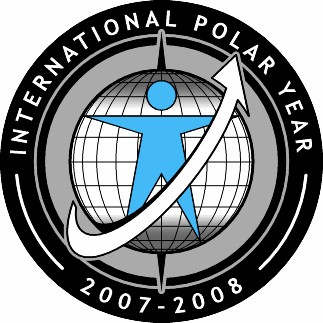International Polar Year (IPY).

Image source-Wikipediaby Addihockey10 Licence-Under Fair use
The International Polar Year (IPY) was a large scientific programme focused on the Arctic and the Antarctic from March 2007 to March 2009.
IPY, organised through the International Council for Science (ICSU) and the World Meterorological Organisation (WMO) ,was the fourth polar year, following those in 1882-83,1932-33,and 1957-58. In order to have full and equal coverage of both the Arctic and Antarctic, IPY 2007-08 covered two full annual cycles from March 2007 to March 2009 and involved over 200 projects, with thousands of scientists from over and social research topics. It was an unprecedented opportunity to demonstrate, follow, and get involved with, cutting edgr science in real-time.
Its aim was to provide better observation and understanding of the earth's polar regions, and to focus earlier, the International Geophysical Year paved the way for the successful negotiation of the Antarctic Treaty. This Treaty has stood the test of time snd has secured Antarctica as a continent of peace and science ever since.
IPY occured amidst abundant evidence of changes in snow and ice; reductions in extent and mass of glaciers and ice sheets, reductions in area, timing, and duration of snow cover, and refuctions in extent and thickness of sea ice. Changes in snow cover and sea ice have immediate local consequences for terrestrial and marine ecosystem. Permafrost, an additional form of ice that influences nearly 25 percent of the northern hemisphere landmass, alsi shows substantial decomposition due to warming climate. Permafrost degradation affects local ecology and hydrology as well as coastal and soil stability.
Changes in the large ice sheets will impact global sea level, affrcting coastal cities and low-lying areas. Changes in snowfall and shrinkage of glaciers will influence millions of people whose daily use of water for personal consumption or for agriculture depends on snowpack and glacial sources. Thermal degradation of permafrost will mobilise vast reserves of frozen carbon, some of which, as methane, will increase thr global greenhouse effect. Changes in sea ice combined with enhanced river inputs of freshwater will lead to substantial changes in ocean curculation. Warming of polar oceans, coupled with changes in ice coverage and river run-off, will after marine ecosystems with consequences for globally-signigicant fisheries.
Polar changes occur not on a remote planet, but in the daily living environment of more than 4 million prople of this planet. Northern communities face changes in their natural environment and in their natural resources and food systems, changes of rapidity and magnitude beyond recent experience or traditional knowledge. Northern people also face uniwue health challenges related in part to pollutants transported to polar regions, and accelerating pressures of development and commercialism.
➡Reference:
IPY-Wikipedia
IPY 2007-08
IPY-History
IPY-Brief History
IPY-Legacy-Arctic Portal
First IPY... 1882-83.